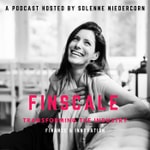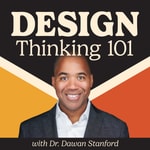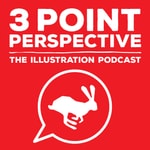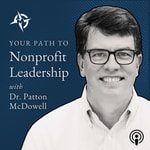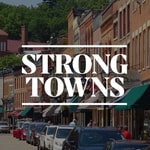The Conversation Factory – Details, episodes & analysis
Podcast details
Technical and general information from the podcast's RSS feed.

The Conversation Factory
Daniel Stillman
Frequency: 1 episode/23d. Total Eps: 100

Recent rankings
Latest chart positions across Apple Podcasts and Spotify rankings.
Apple Podcasts
🇨🇦 Canada - management
22/04/2025#52🇨🇦 Canada - management
18/04/2025#92🇨🇦 Canada - management
11/03/2025#63🇨🇦 Canada - management
20/01/2025#55🇨🇦 Canada - management
16/01/2025#49🇨🇦 Canada - management
15/01/2025#78🇨🇦 Canada - management
01/01/2025#94🇨🇦 Canada - management
31/12/2024#49🇨🇦 Canada - management
19/10/2024#78🇫🇷 France - management
08/10/2024#100
Spotify
No recent rankings available
Shared links between episodes and podcasts
Links found in episode descriptions and other podcasts that share them.
See all- http://incompetech.com/
15093 shares
- http://incompetech.com/music/royalty-...
661 shares
RSS feed quality and score
Technical evaluation of the podcast's RSS feed quality and structure.
See allScore global : 73%
Publication history
Monthly episode publishing history over the past years.
The Secrets of Motivation and Systems Change with Becca Block, PhD
Season 8 · Episode 7
lundi 19 août 2024 • Duration 51:08
Warning - this episode uses a specific curse word - a lot. And once we started using one, we started using more of them. So…if f-bombs, sprinkled like salt are not your cup of tea, this is a good episode to skip!
My guest today is Rebecca R Block, PhD, who is an expert in helping organizations build programs, services and products that equip young people to develop the confidence and skills they need to enter adulthood as thriving and adaptable lifelong learners. She has spent the last 14 years leading the design, improvement, and evaluation of educational programs and services to make them more impactful and learner-centered. She has built R&D departments from scratch and managed large and small teams responsible for creating, measuring, and improving learning experiences.
She also wrote a book with the word “Shit” in the title…or Shit, with an asterisk where the “I” goes, which actually makes her book a bit hard to google!
The book is titled “Can You Help Me Give a Sh*t? Unlocking Teen Motivation in School and Life,” and she teamed up with Grace L Edwards, a current undergraduate student, to talk to young people across the country and gather their stories about what truly makes for engaging learning environments. In the process, she learned a lot about how motivation works for everyone, not just teens, and has taken those lessons learned into her work as a leader, parent, and educator.
In the opening quote Becca outlines the ABCs of Motivation. These ABCs are true for children and adults - we’re basically the same species. And the work of luminaries such as Peter Senge and Amy Edmondson make it clear that great working environments are great learning environments - places where we can create and sustain positive feedback learning loops with ourselves and others. So it’s essential for anyone leading or managing others (or themselves!) to understand how motivation really works.
We also talk about Becca’s essential values when it comes to co-creation - that is, making a systems change along with the people in that system who will be affected by that change. Co-creation is not just a good idea… it leverages the truths about motivation that Becca shared in her opening quote. People are much more likely to want to participate in change that they’ve taken part in forming, rather than going along with something forced on them.
Two Levels of Systems Change
We also talk about the need to work on at least two levels when engaging in systems change:
Helping people, now
Helping make a bigger shift, over time.
Given that Becca knows how challenging it can be to transform a system as complex as education, she focuses her work in this book on helping people, now, to work to create change for themselves, within the current system. This perspective is helpful for anyone leading a team in a larger organization or anyone leading an organization within a larger industry they are hoping to transform.
Listen in for Becca’s deeper breakdown of the ABC’s of motivation, as well, summarized here!
The ABCs of Motivation
Ability
Belonging
Choices
Ability: In any situation where you want someone (or even yourself!) to have sustained motivation, you need the Ability to do (or learn how to do) the things you want to do. Indeed, whenever you find that someone isn’t doing something you have asked them to do, it’s important to ask - is this an issue of Will or Skill? In other words, can they do the thing? If they can’t yet, do they have the confidence in their ability to learn the thing?
Belonging: Real relationships help us accomplish things. I show up for my Spanish lessons (partly) because I’ve paid for them, and partly because I’d feel bad for standing up my tutor, even though the classes are online. Ditto for my exercise classes. Real relationships create real motivation. In a recent episode, I spoke with Robbie Hammond, Co-founder of the High Line, who talked about how his relationship with his Co-Founder Josh David kept him going through a difficult decade of bringing their dream to reality - talk about Relationships = Motivation!
Choices: Having real choices means you have the autonomy to determine for yourself what you are going to do. “Liberty or Death” isn’t much of a choice - although it is one many have taken. Becca suggests that dysfunctional workplaces create crappy or fake choices, and functional ones enable everyone to see how the work fits into their own personal why.
I connect these ideas to my recent interview with Ashley Goodall, author of “Nine Lies about Work” and most recently “The Problem with Change." Ashley says, “The ultimate job of leadership is not disruption and it is not to create change; it is to create a platform for human contribution, to create the conditions in which people can do the best work of their lives.” This is what every human (and teenager!) actually really wants, if they can connect to the ABCs of motivation.
Head over to theconversationfactory.com/listen for full episode transcripts, links, show notes and more key quotes and ideas. You can also head over there and become a monthly supporter of the show for as little as $8 a month. You'll get complimentary access to exclusive workshops and resources that I only share with this circle of facilitators and leaders.
Links
If you want to be on her podcast: fill out a form here!
How to Turn a Conversation into a Public Park
Season 8 · Episode 6
lundi 22 juillet 2024 • Duration 01:03:31
Sometimes the bold goals we set out to achieve actually happen, and sometimes something even more amazing happens - something better than we can imagine.
Usually that happens because of the people we meet along the way, the conversations we have, the unexpected connections we make that open up new doors - in a word, Serendipity. I had always wondered about what amazing, powerful and sustained conversations led to the High Line Park in New York City becoming a reality.
Have you walked the High Line? Literally millions of people a year walk some of its 1.45 mile length, enjoying expansive views of the city and hundreds of local plantings, as well as amazing art installations. But it was slated for demolition and considered an eyesore and a relic, as long ago as the 1980s.
Built in 1933, it was at the time a revolutionary elevated train line that was colloquially called the Lifeline of New York City since it was regularly bringing millions of tons of meat, dairy and produce by rail, directly into the warehouses and factories of lower manhattan for preparation and distribution. The rail line wasn’t just a lifeline because of the food it brought, it also moved the rail lines safely above the city’s growing traffic - in the 1910s, hundreds of people were killed by the ground-level trains that ran in the middle of the bustling 10th avenue!
By the 1960s the line was growing obsolete due to the rise of trucking, and by the 1980s, it was a hulking relic of the past.
In 1999, Robbie Hammond, my guest for this conversation, co-founded the Friends of the High Line along with Joshua David. The two met at a local community board meeting where the High Line’s future was being discussed. Rudy Guliani, NYC’s mayor at the time, had signed an executive order for its demolition - many property owners wanted it gone so they could take back the land occupied by the tracks and build bigger buildings - a dream of greater square footage and increased rent rolls.
Currently Robbie is the President & Chief Strategy Officer for Therme Group US, where he is leading an initiative to bring large scale bathing facilities to the United States. He also currently serves on the boards for Little Island, Sauna Aid, Grounded Solutions Network, and the San Antonio Museum of Art.
When I was a little kid in NYC in the 80s, I looked up at the hulking tracks and thought “what the hell is that doing in the middle of the city?!” Many adults thought the same thing.
Robbie and Josh looked at the tracks and thought “we should really do something cool with that instead of tearing it down.”
In 2009 the first section of the high line opened to the public. In 2019 and 2023 new sections were completed.
Against all odds, “two neighborhood nobodies” (as one writer described them!) created a coalition, learned to raise money and garner the favorable attention of local politicians, and persisted and succeeded. The park is maintained, operated, and programmed by Friends of the High Line in partnership with the NYC Department of Parks & Recreation and is run on donations.
There are many amazing angles to the story of the Highline:
Maybe you DON’T need a coherent or complete Vision or Mission?!
Robbie makes it clear that they didn’t even have a clear vision or strategic plan for some time…just the idea that the elevated line was worth saving and doing something with…they discovered what they wanted to create along the way. He actually credits the vagueness of the mission with creating a “big tent” that attracted more people to the organization.
From a conventional dream to something better than anyone could imagine
One surprising insight is that the property owners had a rather conventional dream - tear the elevated tracks down so they could build bigger. Turning the High Line into a park seemed like a low-value, impossible pipedream - sex workers and drug users congregated under the overpasses, after all! But the High Line’s millions of visitors have transformed the value of the area far beyond the addition of a few extra square feet.
The High Line as a symbol for dreamers of impossible dreams
One of Robbie’s greatest points of pride is that the High Line now stands as a symbol to many “crazy dreamers” who find inspiration in the story of outsiders persisting and accomplishing more than they ever dreamed possible. The High Line is now a global inspiration for cities to transform unused industrial zones into dynamic public spaces. But Robbie loves the personal stories of folks who come up to him at talks, who are working on all sorts of projects and who find inspiration in Robbie and Josh’s “keep going against all odds” story.
The importance of Talking to People
Robbie talks about how he was always willing to pick up the phone and talk to anyone - the fearlessness of someone raised in sales. But the Friends of the High Line were also willing to host conversations with community groups and listen to them, and learn from them and communicate with them about why they were listening to their ideas and why, in some cases, they weren’t going to. Open lines of consistent communication made the High Line possible.
The Alchemy of the Co-Founder Relationship
In this conversation, Robbie is bracingly reflective and shines a sometimes harsh light on himself. Here at the 15th anniversary of the opening of the Highline and the 25th anniversary of the start of the project, the founding of the Friends of the High Line, Robbie looks back and is refreshingly honest about his own challenges and shortcomings, as well as missed opportunities along the way to do things differently.
What was truly surprising to me in this conversation is that Robbie was so open about his challenges as a co-founder, and is so open-eyed about how essential this most intimate of relationships can be…and how much he and Josh were willing to invest (in time, energy and resources) in that relationship to keep it intact, functional and flourishing.
The Energy and Anxiety of Creation
Robbie suggests that it is common for creative people (which includes entrepreneurs, and anyone that starts anything) to have a drive to accomplish their dream - that is what keeps them going… but that there is often “an undercurrent of anxiety”. Meditation helped Robbie reclaim a higher level of happiness as the High Line approached realization, but it took him years to undo the deep grooves anxiety etched in his psyche. It's a worthwhile lesson for anyone listening out there who's creating something, start taking care of yourself sooner rather than later.
You can follow Robbie on Instagram at thehighlineguy and stay in the loop on Therme’s projects at https://www.thermegroup.com/.
Head over to theconversationfactory.com/listen for full episode transcripts, links, show notes and more key quotes and ideas. You can also head over there and become a monthly supporter of the show for as little as $8 a month. You'll get complimentary access to exclusive workshops and resources that I only share with this circle of facilitators and leaders.
Links
https://www.instagram.com/thehighlineguy
Robbie’s Book: The Highline:The Inside Story
https://www.thehighline.org/history/
Early documents from the highline: Reclaiming The High Line: A Project Of The Design Trust For Public Space With Friends Of The High Line (2002)
Talks:
"High Line: The Inside Story of New York City's Park in the Sky" - Richard Hammond
https://www.ted.com/talks/robert_hammond_building_a_park_in_the_sky
Designing Conversations to Unlock Strategic Foresight and Innovation with Kevin Bethune
Season 7 · Episode 14
mardi 31 octobre 2023 • Duration 54:40
I’m excited to share my conversation with Kevin Bethune, a multidisciplinary design executive, entrepreneur, best-selling author and keynote speaker based in Redondo Beach, California. He’s been a VP of Strategic design at BCG Digital, A global process product manager at Nike and a Nuclear Engineer at Westinghouse. He currently leads his own firm, https://dreamsdesignandlife.com/
One of his key ideas is “Open your aperture.” -ie, shifting the lens that you are looking at a problem from or through. Design and Design Thinking has so many tools to help us do just that, and find creative approaches to our biggest challenges.
In our conversation, we discussed the importance of embracing creative approaches (since our habitual approaches most likely can’t solve them!) and the need for bold leadership to optimize for curiosity and creativity - because going with business as usual is usually a lot easier than spending time on curiosity.
It takes a willingness to slow down to optimize for curiosity in a business environment that is often so focused on quarterly capitalism.
We also highlight the lack of diversity in design and innovation, particularly in black representation, and the cognitive dissonance of claiming to serve certain communities without actually representing them - an unresolved critique of many innovation firms.
The S-Curve and the Cone of Possibility
Kevin’s book, Reimagining Design: Unlocking Strategic Innovation, is CHOCK A BLOCK with diagrams (and I love diagrams!) that will stretch your thinking, but we spent some time on one diagram in particular that combines two classic models of thinking: The cone of possibility and the s-curve.
The Cone of possibility is a cone on its side, with the tip at the present, and the sides of the cone stretching out like rays of sunshine to the right. The rays represent possible futures along the timeline. There are many versions of this diagram online. Kevin’s version calls the center of the cone the “most likely” or projected future. The cone of possibility invites us to consider widening edges - future scenarios that are plausible and even impossible or preposterous futures, not just the projected or ideal future.
Opening our aperture to consider multiple possible futures means that our plans can be more resilient, adaptable and even antifragile.
The S-curve is a visual representation of one of my favorite Shakespeare Sonnets. #15:
When I consider everything that grows
Holds in perfection but a little moment,
That this huge stage presenteth nought but shows
Whereon the stars in secret influence comment;
When I perceive that men as plants increase,
Cheered and check'd even by the selfsame sky,
Vaunt in their youthful sap, at height decrease,
And wear their brave state out of memory;
Things are born (or emerge), they grow, mature and then fade away. Kevin’s version of the S-curve includes more detail:
-
Emergence
-
A dip - the trough of disillusionment
-
A hyper-growth phase that slows into..
-
Maturity and then…
-
Decline, or retirement.
Kevin overlays the cone of possibility with a set of cascading s-curves, representing a host of possible trends rising and cresting as we look out into the possible futures.
As Kevin describes this diagram in our conversation, his hands are making waves of opening and closing, diverging and converging. That's what he’s seeing when he looks along the cone of possibility: all of these different trends, multiple pathways. It’s this complex, undulating space that he tries to illustrate for the teams that he works with to help them see a bigger aperture to think inside of.
These diagrams, these mental models, help redesign the conversation about strategy and innovation. We’re not designing for a single, simple, ideal future. We’re looking out at a complex landscape with multiple possible twists and turns. That is how you unlock strategic innovation - step back, widen the aperture and change the conversation.
In short - creative visualization facilitates dialogue and widens perspectives.
Head over to theconversationfactory.com/listen for full episode transcripts, links, show notes and more key quotes and ideas. You can also head over there and become a monthly supporter of the show for as little as $8 a month. You'll get complimentary access to exclusive workshops and resources that I only share with this circle of facilitators and leaders.
Links
A Leader's Guide to Managing Organizational Emotions During Layoffs and Beyond with Emily Levada
Season 7 · Episode 13
mardi 17 octobre 2023 • Duration 55:32
My guest today, Emily Levada, is a seasoned Chief Product & Technology Officer. Currently, she is the Chief Product Officer and Interim co-CEO at Embark Veterinary, a company dedicated to leveraging genetics to enhance the health and longevity of dogs. During her tenure, the company has achieved notable recognition, ranking as the #3 fastest-growing private company in Massachusetts and earning a spot on Forbes' list of promising venture-backed startups.
She also serves as a Board Member at JCC Greater Boston, bringing her expertise to contribute to the organization's growth and development and holds a significant role as a Member of the Customer Advisory Board at UserTesting, where she actively engages in guiding and advising the company.
Emily is also a two-time podcast guest, my first ever! We did an episode a few years back where she shared some wonderful insights and frameworks about Trust, Communication and Psychological Safety in teams.
Emily was also gracious enough to be a guest mentor for the Innovation Leadership Accelerator cohort I co-ran with my friend Jay Melone from the product innovation consultancy New Haircut some years back.
In this conversation, we sat down to talk about managing organizational emotions, especially negative emotions, and especially during critical junctures, like layoffs - something that many folks have been through, and many folks in the past year. I knew that Emily had some experience with this in the past and had some great thinking to share around this crucial leadership topic.
There’s no *good* side to be on in a downsizing event - the people who are losing their jobs and income are also losing a sense of identity and need to navigate an uncertain future. But the loss of identity and the need to face an uncertain future is also true for the folks who are still with the company - both the “rank and file” and the leadership.
Layoffs done poorly can dent a company culture.
Emily emphasized the importance of transparency in the period leading up to a layoff, as it builds trust and can mitigate negative emotions.
On the other hand, leaders often have a desire to protect people from such difficult conversations until the last possible moment, so the whole team can focus on their day-to-day jobs.
I explored this polar tension between these two fundamental values, transparency and protection, with Emily using a tool called Polarity Mapping, developed by Barry Johnson Ph.D., the creator (and registered trademark holder!) of The Polarity Map®! You can read more about polarity mapping in my friend Stephen Andserson’s short blog post here and check out Dr. Johnson’s company, Polarity Partnerships here. IMHO, Stephen’s version of Barry’s diagram (below) is a bit clearer!
The basic idea of Polarity mapping is that often we feel pulled by two values, like:
Should we focus on Innovation or Efficiency?
Should we prioritize Deadlines or Quality?
Growth vs. Consolidation?
Short-term Gains vs. Long-term Organic Growth?
Centralization vs. Decentralization?
(thanks for these examples, Stephen!)
In my own coaching work, I’ve found leaders can struggle to navigate conflicting parts of themselves, forming inner polar tensions that leave them feeling stuck, like:
“I need to be flexible vs I need to be firm”
“I need to lead the conversation vs I need to let the conversation flow”
“I need to be aggressive or I have to be more passive”
“I need to listen more vs I feel the need to fix challenges”
“I want to be authentically myself vs I need to be a chameleon to get by”
And because we get pulled between them, and feel the polarity to be an unwinnable double bind of “damned if I do,” we kind of flub the balancing act. Polarity mapping asks us to be ultra-specific about the positives of both values AND to be very clear on the downsides of over-indexing on one value to the detriment of the other.
Doing a mapping like this can help us thread the needle of polarity, and look out for the early warning signs of over-indexing in one direction or another.
Below is a version of a polarity map for the tension Emily describes in our conversation, between Transparency and Protection.
Emily points out that these polarities pop up, not just at crucial moments in a business like layoffs, but in day-to-day operations, too.
Leaders can feel that Emotions are Inconvenient, but Team Emotions have real impact
Emily shares the top three negative organizational emotions she finds can deeply impact a team’s ability to learn (ie, be willing to experiment), be creative (ie, being able to innovate) and be fundamentally effective:
Anxiety (Fear)
Boredom
Apathy
Fear, anxiety, and boredom are detrimental to creativity and productivity in knowledge work. Leaders need to address these emotions and create an environment that fosters engagement and challenge - and ultimately, create a learning organization.
“People cannot do creative knowledge work when they feel fear and anxiety and boredom. Those things are just incompatible.”
Emily suggests that well-run one-on-one meetings are crucial for understanding how team members are feeling and detecting signs of overwhelm, underwhelm, or “whelm” in their job. One-on-ones can help build a foundation of trust and safety, on which we can build honest and productive conversations.
Emily also shares some straightforward approaches for shifting these key negative emotions:
Anxiety: focus on building psychological safety for teams experiencing anxiety, and provide more transparency and context.
Boredom: create relevant challenges
Apathy: create accountability and challenge for teams experiencing apathy
Head over to theconversationfactory.com/listen for full episode transcripts, links, show notes and more key quotes and ideas. You can also head over there and become a monthly supporter of the show for as little as $8 a month. You'll get complimentary access to exclusive workshops and resources that I only share with this circle of facilitators and leaders.
Links
Trust, Communication, and Psychological Safety with Emily Levada
The Joys of Polarity Mapping, by Stephen Anderson
Unpacking Mentoring with Jason Knight and Sandra Monteiro
Season 7 · Episode 12
jeudi 14 septembre 2023 • Duration 56:51
My guest today is Jason Knight, the creator, host, producer, editor and promoter of the One Knight in Product podcast, a B2B SaaS product consultant, and fractional Chief Product Officer for companies that have gotten to product market fit and need help scaling their product team. Jason is also the founder of My Mentor Path, an inclusive, accessible and cloud-based mentorship service.
Sandra Monteiro, a Product Manager at SAGE Publishing and a mentee of Jason’s, joined us halfway through to share her own experiences with mentoring, how she found her way to working with Jason as a mentor and what some of her learnings and insights from working with Jason as a mentor have been. She also shares her thoughts on what mentees should be thinking about as they search for and work with mentors.
We explored Jason’s mentorship journey and why mentorship matters to him, the challenges of Industrializing mentorship pairing and productizing the matching of the lopsided mentorship marketplace.
We also touch on how to measure the impact of the work and the subtle and important difference between Mentoring and Coaching. Jason suggests that many people who say they want coaching really want mentoring from someone who has “been there and done that”…and that great mentoring leverages coaching mindsets and skills in a practice he affectionately calls “centering”.
Some fundamental questions we explored were the differences and relative merits of FORMAL vs INFORMAL mentorship as well as working with someone INTERNAL vs EXTERNAL to your Organization
One of the big insights Sandra shared was shifting her expectations on the nature of the mentoring relationship from one centered around SOLVING vs conversations centered around TOOLS (ie, being offered relevant examples, learning materials and frameworks, holding space for emotional distance, and being offered broader context for challenges).
Head over to theconversationfactory.com/listen for full episode transcripts, links, show notes and more key quotes and ideas. You can also head over there and become a monthly supporter of the show for as little as $8 a month. You'll get complimentary access to exclusive workshops and resources that I only share with this circle of facilitators and leaders.
Links
https://www.oneknightinproduct.com/bio/
https://www.oneknightconsulting.com/
My conversation on Unapologetic Eating and Living with Alissa Rumsey is here
When the Mission Drives the Tech: Co-Founder Conversations
Season 7 · Episode 11
mardi 5 septembre 2023 • Duration 58:58
It’s not every day that a patient-doctor relationship turns into a Techstars-Funded medical innovation startup. In this episode I sit down with Dr. Onyinye Balogun and Eve McDavid, the co-founders of Mission-Driven Tech, a women's health venture in collaboration with Weill Cornell Medicine dedicated to the transformation of cervical cancer care with modern technology.
Onyi, as her friends call her, is the CMO of Mission Driven Tech and also an Assistant Professor of Radiation Oncology at Weill Cornell Medicine specializing in the treatment of breast and gynecologic malignancies and does research into improving cancer care in low and middle income countries.
Eve, the CEO, is a former Google executive who is also a Stage IIB Cervical Cancer survivor. Eve and Onyi met during the pandemic, when Eve was undergoing cancer treatment under Onyi’s care.
I heard Eve and Onyi’s presentation at the 2023 Techstars Demo day in New York and was stunned by the fundamental disparities in historical improvement in gynecological cancer outcomes - as they point out in this conversation, in recent years, Prostate cancer treatment has achieved a nearly 100% five year survival rate. In the same period, cervical and uterine cancer mortality has gotten worse, while cancer treatment for all other cancers has improved exponentially. Their company exists to change that story.
Co-Founder Communication InsightsThis conversation is one of a series on co-founder communication. Check out my interviews with the co-founders of online gaming start-up Artie on Pivoting while staying sane (the secret - have a coach and a therapist!), a conversation with Carolyn Gregoire and Scott Barry Kaufman, the co-authors of the 2015 bestseller, Wired to Create, on navigating Paired Creativity, and this interview with the co-founders of collaboration tool Range, Jennifer Dennard and Dan Pupius, on the keys to healthy conflict. One key that Beth Bayouth and Mario Fedelin, the COO and CEO (respectively) of Changeist, a non-profit organization dedicated to youth empowerment, discussed was the importance of co-founders sharing how they are really doing so that they can be sure to not fall apart at the same time, a sentiment that Eve and Onyi echoed.
I also discussed the idea of “prototyping partnerships” with Jane Portman and Benedikt Deicke, co-founders of Userlist - and they helped me see that the healthiest companies have partners that have worked together in some capacity - and indeed, in this interview, Onyi and Eve called Eve’s cancer treatment their “first collaboration”.
Know yourself and each otherThe start of a startup journey can be optimistic, so we explore what they have learned about each other that has helped them to better communicate and collaborate together since they started the project.
Accelerators can’t do it all for youEve and Onyi share how the accelerators can help with structure, mentorship, capital and community, but that ultimately you need to have something worth accelerating - a key customer insight or a core technology - both of which Mission-Driven Tech has!
Have multiple modes and frequencies of communicationEve and Onyi have a weekly meeting just focused on their flagship product, the Blossom device, and another meeting weekly for other issues, and to simply connect. Meanwhile, they have a Whatsapp thread that enables them to constantly stay connected and in touch with each other. Balancing always-on connectivity and scheduled connectivity is key.
A partnership is a marriage and reflective listening is key!Onyi shared their perspective that being in a co-founder relationship is like marriage, and that communication is key for any marriage to work. As she says, “The future of this company rests partly in how well we're able to communicate. So we tell each other the good, the bad and the ugly.” She shared their simple and effective approach to communication - making specific time for it, and using active listening intentionally:
“I hear what you're saying, I reflect it back to you. You hear what I'm saying and you reflect it back to me.”
Know who your real audience isWe discuss user-driven product development, which Eve and Onyi, as a former patient and doctor, are a unique example of…but we also discuss how in their current stage, investors are their actual “buyers”. Onyi discussed how she’s developed a keen sense of “push vs pull” when they are making their investment pitch - some investors just get the commitment required to make a startup like this successful, and those people are their real audience. It’s not about convincing the wrong people, it’s about finding the right people.
Balance Now and NextEvery startup needs to balance managing their current challenges and opportunities with putting energy into strategic vision and planning. Eve points out that this is a particular challenge for medical and device companies - the rate of change can be slow, due to fundamentals of the problem space. So, there needs to be more patience and intention put into planning and hypothesis testing. As Eve pointed out, There is immense pressure to achieve immediate results, but real impact takes time.
Head over to theconversationfactory.com/listen for full episode transcripts, links, show notes and more key quotes and ideas. You can also head over there and become a monthly supporter of the show for as little as $8 a month. You'll get complimentary access to exclusive workshops and resources that I only share with this circle of facilitators and leaders.
Links
https://missiondriventech.com/
LinkedIn:
Onyi: https://www.linkedin.com/in/onyinye-balogun-md-ms-22b57283/
Give First: The Long Conversation of Being a Co-Founder
Season 7 · Episode 10
lundi 28 août 2023 • Duration 46:32
David Hoffman built and sold big-data and data analytics company Next Big Sound to Pandora in 2015. He's now building Beam, which helps people create shoppable mood boards for DTC brands.
David reflects on his experience with mentorship and the long arc of the conversation that is being a co-founder and being in community. We unpack the Techstars motto "give first" and discuss the power of the Techstars community and the importance of community relationships in entrepreneurship.
We talk through the complex evolution that is founding and scaling a startup, his experience doing just that with Next Big Sound, and the challenges of becoming a leader inside a growing company.
One challenge is always scaling culture as a company scales, and David outlines some of the routines and structures that helped in defining his startup's culture. David also shares some insights on the post-startup-sale emotional roller coaster and the decision to build another company. Some of my other favorite insights from David:
-
Living the “Give First” motto requires approaching everything with curiosity.
-
“Grown ups” is a construct: When it is your idea and your company, you can make the decisions you need to make.
-
Your Culture is made of your routines, whether it’s Friday bagels or snap-clapping after people share wins.
-
Your MVP product can be much, much more simple than you think if it creates value for your customers.
David’s nuanced reflections are a gift, and I’m so glad he sat down for this conversation.
Head over to theconversationfactory.com/listen for full episode transcripts, links, show notes and more key quotes and ideas. You can also head over there and become a monthly supporter of the show for as little as $8 a month. You'll get complimentary access to exclusive workshops and resources that I only share with this circle of facilitators and leaders.
Links
Cofounder Conversations: Pivoting while Staying Sane
Season 7 · Episode 9
lundi 21 août 2023 • Duration 01:00:09
My guests today, Ryan Horrigan and Armando Kirwin, bonded over their mutual fascination with the future of entertainment and their desire to do something innovative, which led to the creation of their current company, Artie. We talk about pivots and micro pivots and staying sane through the million tiny conversations Cofounders need to navigate.
Ryan, the CEO, and Armando, President and co-founder of Artie have a pretty radical vision for the future of social media— namely, to make TikTok, Instagram, Twitter and other social media apps the gaming consoles of the future.
Before co-founding Artie, Ryan served as Chief Content Officer of the Comcast-backed VR & AR startup Felix & Paul Studios. He oversaw the development and production of feature films, including Academy Award Best Picture Winner “12 Years A Slave.” at Fox/New Regency, and is a two-time Emmy Award winner for immersive entertainment projects he produced with President Barack Obama and NASA, as well as a Peabody Award winner.
Armando has been in the VFX world for over fifteen years, working with numerous award-winning directors, including two-time Academy Award nominee Lucy Walker, Sundance Grand Jury prize nominee Sandy Smolan on The Click Effect, which was nominated for an Emmy; and Imraan Ismail on The Displaced, which won the Grand Prix at Cannes. He also produced Take Flight, starring Benicio del Toro, Michael Fassbender, and Charlize Theron. His most recent VR film, Nothing is Safe (2022), was an official selection of the Cannes Marché du Film.
While movies are a wonderful industry, they both saw the power and potential of gaming as a storytelling platform - and a financial juggernaut. If you didn’t know: According to a report by SuperData Research, the global gaming market was valued at $159.3 billion in 2020. This includes revenue from console games, PC games, mobile games, and esports. Let’s put that into perspective: the music industry was valued at $19.1 billion in 2020, and the movie industry at $41.7 billion. That means the gaming industry is more than three times the size of the music industry and almost four times the size of the movie industry.
TikTok used to be where people just watched videos (as of this writing, TikTok and Netflix are nearly tied for eyeball-hours). Now, hundreds of thousands of people are playing games on TikTok thanks to Artie and the technology breakthroughs that make streaming app-quality games from within social media apps possible.
But how did they get here? Through a million micro conversations about data, signals, stakeholders and what it all means. Artie is where are are today not because of one big pivot, but many, many micro-pivots over the course of years.
Pivots impact the team - who you needed on staff when you were focused on one path isn’t always who you need when you’ve decided to shift directions. Communication between departments and involving the team more is important - which means being intentional about regular check-ins and interdepartmental communication, but eventually, it comes down to the co-founder conversation - owning the choices that need to be made and moving forward, all while making sure you stay healthy and sane.
Pivots vs Shaping Clay
I loved this metaphor from Ryan, where he suggested that, from the outside, to investors, bloggers and customers, a company may have pivoted once, or a few times. From the inside, there are daily conversations, where the product is being shaped like clay, remade, refocused, almost constantly.
“Listen to your body, have a Coach and a Therapist”
This was one of my favorite insights from this conversation. It’s not often that men talk openly about mental health and needing support. Ryan and Armando both have a coach (although they meet with that coach separately) and Armando advocated for having a therapist, while Ryan discussed how they got much much more intentional about listening to their bodies and taking down time. Armando suggests that therapy focuses on self-awareness, learning about yourself and your patterns, while his coaching focuses on future outcomes and goals.
“You have to care deeply about your people, but at the same time, you can't care about what they think of you”
Ryan quotes what he describes as a harsh-sounding notion from Dick Costello when he was at Twitter: In Ryan’s experience, when you make a tough decision, you can't worry about everyone's collective feelings (even though you DO care about them as people and teammates). You have to make the decision that you, as the leader, believe needs to be made.
As a founder, you have to make and own tough decisions.
Ryan points out that, at the end of the day, you can't ignore tough decisions. You can’t have someone else do it for you. He suggests that while these moments are hard, it’s helpful to focus on the people who are still with you and the ultimate goals you’re trying to achieve.
Links
The Power of Intention
Season 7 · Episode 8
jeudi 10 août 2023 • Duration 48:27
I am excited to share my conversation with Leah Smart, who I had the pleasure of meeting at the Culture Summit where we were both giving main stage talks. Leah is brilliant! She’s all about helping people become the authors of their lives, which she does through her work on the LinkedIn Editorial team and hosting her LinkedIn podcast, In the Arena with Leah Smart, which is out every week wherever you find your podcasts.
She loves facilitating human development work for leadership teams through coaching and workshops and sharing science-backed actionable concepts and strategies to transform your life, your work, and your relationship to everyone around you.
Today we talk about how she approaches designing her conversations with guests as a dance, how she molds her conversations with herself through personal mantras, and her perspectives on the power of intention.
Head over to theconversationfactory.com/listen for full episode transcripts, links, show notes and more key quotes and ideas. You can also head over there and become a monthly supporter of the show for as little as $8 a month. You'll get complimentary access to exclusive workshops and resources that I only share with this circle of facilitators and leaders.
Links
Leaders as Humble, Audacious, Z-Shaped Coaches
Season 7 · Episode 7
jeudi 20 juillet 2023 • Duration 52:15
I am excited to share my conversation with AJ Thomas, who I had the pleasure of meeting at the Culture Summit where we were both giving talks. AJ was sharing her perspectives on being a Chaos Pilot at Google’s Moonshot Factory, Called “X”. At the time of this conversation, she’s been with Google for nearly four years, starting as Head of People.
AJ is also A CxO in Residence at A.Team AND an Advisor at Magic Eden and SemperVirens Capital. She is also an Executive coach on the side.
She’s got a full calendar.
X, A.Team, CxO. This is starting to sound like the credit roll on Sesame Street! That is a lot of letters, but we’ll add a few more, like T, I and Z.
You may have heard of being T-shaped, as in having breadth of knowledge in general and having depth in one particular area…versus being “I” shaped - having just depth, but no breadth. Breadth is important in any position, because having some breadth means you can more readily engage a broad swath of people in productive dialog, partially because you “get” their inside language enough to collaborate with them. This breadth of collaborative potential is especially important for Leaders.
AJ is a fan of being a Z-shaped-leader, which for her means having depth across many different areas, over time, and the ability to connect the dots between them. But while being able to connect the dots, to scan the horizon for innovation and emergent opportunities, to be able to see an Audacious and almost-impossible future AND communicate that vision to others is a powerful leadership skill, AJ sees Humility as an equally powerful leadership value. This puts AJ in excellent company with Dr. Marilyn Gist, PhD, Professor Emerita of Executive Programs at the Center of Leadership Formation at Seattle University, author of "The Extraordinary Power of Leader Humility," and a past guest on this podcast! Check out our conversation here where Dr. Gist shares her Six Keys to Leadership Humility.
I love AJ’s idea of keeping Audacity and Humility in dynamic tension - staying “Humbacious”! That balance, the ability to “sprinkle” one quality or another into a conversation, shows up as tremendously powerful and generative in AJ’s leadership and coaching work. Audacity holds space for people to explore potential - the biggest vision and possibility. And Humility drives us to assume that we might be wrong and to leverage the mind of a scientist to de-risk the road ahead with powerful questions and intentional experiments.
Enjoy this powerful deep dive into these ideas and a lot more.
Head over to theconversationfactory.com/listen for full episode transcripts, links, show notes and more key quotes and ideas. You can also head over there and become a monthly supporter of the show for as little as $8 a month. You'll get complimentary access to exclusive workshops and resources that I only share with this circle of facilitators and leaders.
Links

